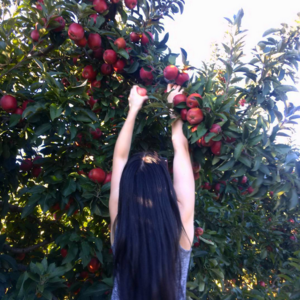Have you ever taken a batch of your lovely fresh brownies out of the oven, marveling at the aroma, only to take a bite and feel less than satisfied? Have you ever noticed something slightly off in the taste of your chocolate chip cookies? Chances are, you’ve probably never paid any particular attention to the type of chocolate you’ve been using in all of your favorite recipes. Chocolate is chocolate, right?
As it turns out, things aren’t so simple. In fact, slight variations in such qualities as fat content, cocoa solids percentage, or sugar additives can make all the difference. So please, consider this your definitive guide to all things chocolate. I swear, it will transform your life.
White Chocolate

Though not really a type of chocolate as it contains no cocoa solids, white chocolate can be an amazing addition to some recipes. With its high fat content (it’s essentially just cocoa butter, milk, and some sugar), it provides a smooth texture and a rich sweetness not easily achieved with other types of chocolate.
The very quality of its sweetness is quite distinct from that of any other chocolate: more intense, with subtle notes of salt. For this reason, white chocolate becomes a star in recipes that call for ingredients like nuts, lemon, berries, certain cheeses (think Brie), coffee, and even cocoa.
Dark/Unsweetened Chocolate

This type of chocolate is generally not one you’d choose for a snack (but of course there are some deviants who enjoy this). When used correctly, though, dark chocolate can be magical. Since it contains the greatest percentage of cocoa solids (at least 65%), it can be brittle and chalky in texture. This makes it perfect for use in recipes that call for melting. Its bitter taste, on the other hand, requires the presence of another sweetener.
Dark chocolate can be a godsend for experienced bakers, as it allows for greater control over flavor depth, intensity, and sweetness. You’ll find it shines particularly in a soufflé, buttercream, or a ganache, where a sweet and simple base permits its complex flavors to take center stage.
Milk Chocolate

Though the most pleasant to taste, this type of chocolate is not traditionally used in baking. Milk chocolate is much sweeter than dark chocolate and often leads to over-sweetening when used in sugary batters. Since it contains less cocoa solids and a greater amount of milk, it’s also much milder in both texture and taste.
The result of all this is that it doesn’t do much in the way of adding depth or intensity to most baked goods. This means it is best used in no-bake recipes dominated by some other ingredient. You’ll want your milk chocolate to be a pleasant addition, not the star of the show, so use it in toppings, sauces, icings, or glazes.
Bittersweet/Semisweet Chocolate

There isn’t much of a perceptible difference between bittersweet and semisweet chocolate (bittersweet contains about 15% more cocoa solids). Semisweet chocolate, however, tends to be a favorite among bakers for its lack of the acidic note found in bittersweet chocolate.
It’s creamier and sweeter than dark chocolate, but warmer and more flavorful than milk chocolate, and so is best used in recipes where chocolate itself is the pièce de résistance. Make semisweet chocolate the star of your brownies, pancakes, chocolate chip cookies, and more. Reserve the bittersweet for cakes and cupcakes for a brilliant pop of flavor.
Cocoa Powder

Cocoa powder is a standard go-to for any and all chocolate-flavored drinks. I shudder to think that some even manage to use it in baking. The truth is cocoa powder is never meant to be the star of the show. Unless you’re only seeking a quick sugar hit from the sweetened stuff, you’ll do yourself a favor by ditching powder in favor of the real thing.
Cocoa powder is a byproduct of extracting cocoa butter from the cacao bean, and so is super low in fat. While this serves well in low-fat cooking, it will leave your hot chocolate (or anything else you make) thin and flavorless.
Use your cocoa powder instead as a finishing touch on desserts like truffles, cakes, soufflés, brownies, and the like. Whether you’re using sweetened or unsweetened powder, it will always give your creations an extra kick without overwhelming the flavors, just as it’s meant to do.


